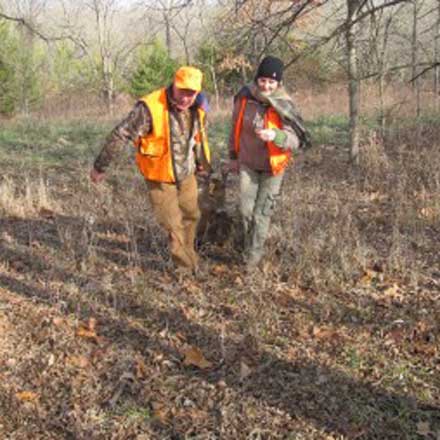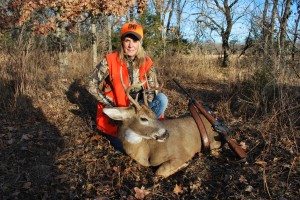
Our American deer rut at different times in different places. Perhaps the earliest rut I know is on California’s Central Coast, where I’ve hunted much of my adult life. The very weird deer season there opens in August, when it’s hot as blazes, and runs into the third week of September (which isn’t much cooler). Despite the heat and long daylight, most seasons catch serious rutting activity during the last week of the season. I think the reason is these deer have no winter stress, but the summers are brutally hot and often dry. So over time, they've adapted to an early rut. The fawns are born in the soft spring months. Depending on where you hunt, the rut is more likely to be late October through November. But in some southerly areas, it occurs in December and even early January.
The problem is the deer decide when it’s time, not us. We hunt when the seasons are open, and when we can get away, whether it’s the best time or not! Most hunters believe the very best time is the “peak of the rut”, whenever that is. I’ve never been so sure of that. It is a great time, when the bucks are chasing does like crazy. It’s a time when mature bucks are most likely to make mistakes, and no matter how well you think you know your hunting area, it’s a time when you are most likely to see bucks you’ve never seen before. The problem with this period, however, is movement becomes very random. A buck you’ve patterned so carefully may well wander into the next county cruising for a hot doe. Of course, a bigger buck that a distant neighbor may have been watching for months could well walk under your stand, so it sort of evens out!
Given a choice, I probably prefer a good, strong pre-rut situation most of all. The bucks are rubbing and scraping, but they’re pretty much sticking to their territories. And while buck movement is never totally predictable, at least it’s normal. Unfortunately, neither deer seasons nor vacation times are always set for the convenience of hunters. All too often we are faced with post-rut conditions, which is definitely the most difficult time. The bucks are tired; they retreat to the thickest cover to rest and lick their antler wounds, and what movement there is becomes more nocturnal. This is the time that tries hunters’ souls!
I deal with this every year at my place in Kansas. The November bow season catches the majority of the rut. The 12-day rifle season starts the Wednesday after...
Thanksgiving. It’s been that way for many years; I think it was set up that way back when the herd was still rebuilding, with conscious thought toward giving every buck a chance to breed before he was harvested. To me that’s sound biology, but it doesn’t make for easier hunting!

With the warmer autumns we’ve been having, the rut seems to have moved back a bit. So depending on weather and how the calendar works, we often have pretty good activity the first few days of the season. But after hunting my place for five years now, I know that no matter how good things look on opening day, within a very few days, the rut is going to shut down—and then it’s gonna get tough!
How you play it depends on your local conditions. My little farm has a lot of heavy oak woods, ideal bedding cover. I know the bucks are in there, and it’s tempting. But it’s a small place, and the woods are really noisy. Absent a foot of fresh snow, which we haven’t seen during deer season in years, I don’t want to disturb the bucks in their bedrooms. The always important food sources become the most critical. Patience becomes more critical, too. Most movement will be nocturnal, but the bucks have lost a lot of weight during the rut; they will get hungry. And they have to recover condition to make it through the winter.
For the last few seasons, I’ve generally seen pretty good activity the first couple of days of our rifle season and then, almost inevitably, things shut down. We actually have a lot of bucks, although few giants, and it hasn’t been uncommon to see half-a-dozen bucks or more on opening day. After that, it also hasn’t been uncommon, in the same place, with very little pressure and often with no shots fired, to go several days without seeing an antler! Weather can be your friend or your worst enemy. If it gets cold, and in our situation, by early December it should, then the deer are hungrier, and there’s more daytime movement. If it stays warm like it did this year, then those first and last minutes of shooting light become ever more critical.
I am not a whitetail expert and will never become one. But I love to hunt them, and I’m...
learning a lot from my Kansas deer. One of the big lessons has been patience. You just have to stick with it, hunting the places you know deer frequent, around food sources you know they like—acorns, food plots, feeders where legal. The longer you can stick with it, both on any given day and in the number of days you put in, the better your chances. It can be frustrating, and in a post-rut situation, you won’t always be successful. But, hey, that’s why we call it hunting. If it was a sure thing, we’d call it something else…and it wouldn’t be nearly as much fun!